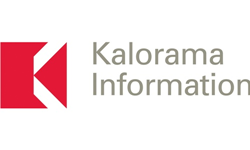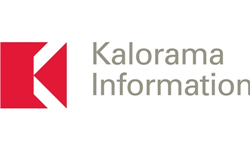
The global patient monitoring and telehealth market has continued its expansion in the institutional, home, and even school segments of the health market with the United States and many European countries at the forefront of implementation.
ARLINGTON, Va. (PRWEB)
September 01, 2021
As millions of children in America return to school, the disruptive presence and impact of COVID-19 lingers. One notable result of the pandemic was the healthcare industry’s increased reliance on remote patient monitoring and telehealth—aka telemedicine. The use of telehealth in the classroom is poised to play an important role in the present and future of this healthcare segment, according to leading medical market research publisher Kalorama Information in the 2021 report Remote Patient Monitoring and Telehealth Markets, 12th Edition.
Telehealth/telemedicine includes sending images to a specialist, live two-way video consultations between patient and provider, capturing and sending data from monitoring devices, and/or incorporating data and images into electronic medical records (EMRs). Reasons for using telehealth vary, but typically include improved access to healthcare for patients in remote locations, cost effectiveness, and patient demand.
“The global patient monitoring and telehealth market has continued its expansion in the institutional, home, and even school segments of the health market with the United States and many European countries at the forefront of implementation,” says Bruce Carlson, publisher for Kalorama Information.
The Emerging Role of Telehealth in Schools
Worldwide, school-based telehealth is a growing trend in developed nations. The United States has been at the forefront of implementation with rapid expansion of programs in schools since 2017, though COVID-19 has made implementation more necessary than ever before. There are several additional reasons for the growing trend including:
- School nurses are in a position to evaluate and notice health issues in students;
- Reduced potential for missed work and missed school days due to immediate available care;
- Less time spent traveling and missing school or work for in-person visits;
- Lower costs associated with telehealth compared to in-person care; and
- May provide an additional option for low-income families that find care inaccessible.
There are several current and potential applications to school-based telehealth including:
- Acute care,
- Dentistry,
- Sports medicine,
- Counseling,
- Behavior health,
- Vaccination,
- Follow-up care.
There is also a growing practice for using telehealth in school-based programs to help monitor and manage youth with special needs. There are more than 15 million children alone in the United States with special health needs and upwards of 60 percent do not have resources for continued coordinated and comprehensive care. Both during the pandemic and beyond, telehealth programs in schools may help address the shortfall through a partnership with pediatricians, school nurses, and families.
Remote Patient Monitoring and Telehealth a $54.5 Billion Global Market
Overall, Kalorama Information estimates the global patient monitoring and telehealth market was valued at $54.5 billion for 2020, inclusive of devices, peripherals, software, packaged services, monitoring services and other applications. COVID-19 increased the global patient monitoring and telehealth market by more the $2.8 billion last year, even without factoring in growth in the market for standard telemedicine, which also was highly impacted during the pandemic as screening visits and routine visits were shifted to online video and telephone visits.
More information about the report can be found here: https://kaloramainformation.com/product/remote-patient-monitoring/
About Kalorama Information:
Kalorama Information, part of Science and Medicine Group, is the leading publisher of market research in healthcare areas, including in vitro diagnostics (IVD), biotechnology, medical devices, and pharmaceuticals. Science and Medicine Group supports companies seeking to commercialize the rapidly changing marketplace at the intersection of science, medicine, and technology. Comprised of industry-leading brands, Science and Medicine Group serves analytical instrument, life science, imaging, and clinical diagnostic companies by helping them create strategies and products to win markets and provide platforms to digitally engage their markets through a variety of innovative solutions. Kalorama Information produces 30 reports a year. The firm offers a Knowledge Center, which provides access to all published reports.
Share article on social media or email:

